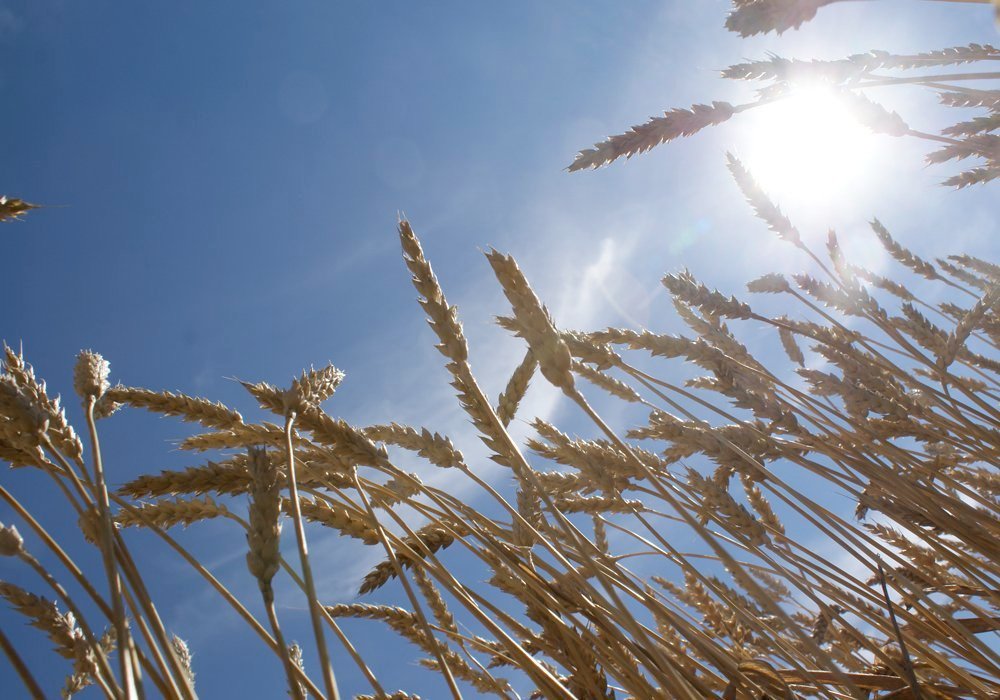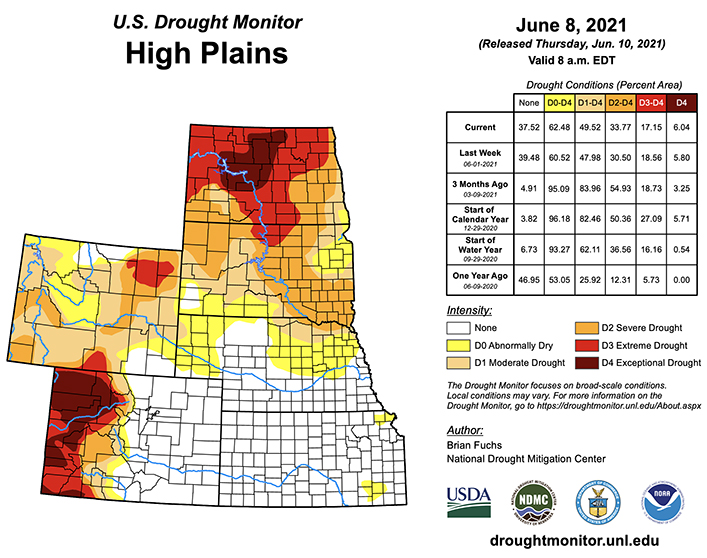Drought threatens North Dakota wheat

Thomas Whittaker is worried about spring wheat development in two key production regions of the world.
The head of weather with Aura Commodities in the United Kingdom is particularly concerned about the northern Plains region of the United States where recent crop ratings were the worst they have been since 1988.
Eighty percent of North Dakota was experiencing moderate to severe drought as of the end of May, Whittaker told delegates attending the International Grains Council’s Grains Conference 2021.
The spring wheat production weighted drought index for the state indicated it was suffering through the worst drought in more than two decades as of early June.
North Dakota received some much-needed rain on June 11 following his June 9 presentation but the crop is still at risk given his troubling summer forecast for the northern Plains region.
A “cool blob” has developed in the eastern Pacific Ocean, which usually correlates to a high pressure system forming over the U.S. Central Plains during summer.
If that happens it could result in drier and warmer than usual conditions for the Northern Plains and the northern and western portions of the corn and soybean belt.
“Those areas could suffer with extended dryness and potentially the risk of flash drought the further into summer we go,” he said.
Whittaker said he isn’t forecasting the same type of flash drought that decimated the 2012 crop but it is a possibility given the dry outlook and he noted that conditions can go from bad to horrid very quickly during the summer months.
“The dryness and heat through the summer period may present quite a problem for the spring wheat crop in the U.S.A.,” he said.
Early season drought in Western Canada has been mitigated by welcome rains in May and June. However, the same forecast for a hotter and drier than normal summer in the U.S. Northern Plains also applies to the Canadian Prairies.
Conditions for the U.S. hard red winter wheat crop have been “very favourable” and there are no big concerns on the horizon for that crop.
The U.S. corn and soybean growing region is also in good shape generally speaking, with the exception of the Northern Plains drought.
There are also pockets of dryness in Iowa Ohio and Michigan but no big red flags yet.
The burning question is will the Northern Plains drought extend into the key corn and soybean growing states as summer progresses?
There are certainly “grounds to be wary” of that happening due to the Pacific blob, said Whittaker.
“There is sufficient evidence on the meteorologist front to support extended periods of above average warm and dry periods through the United States summer,” he said.
Russia’s winter wheat crop is in great shape but Whittaker said the spring wheat growing areas in the Urals region and along the Kazakhstan/Russia border are in trouble due to drier and warmer conditions.
He is forecasting a hot and dry June and July for the spring wheat growing region as well.
“That is a concern for spring wheat yields,” he said.
May 25: Extreme drought contracted in eastern and southwestern ND and northwestern SD; abnormal dryness and moderate to severe drought expanded in eastern SD. https://t.co/hs7rCpQMsY #DroughtMonitor #SDwx #NDwx #SDdrought #NDdrought pic.twitter.com/w0313IWwgk
— NOAA NCEI Climate (@NOAANCEIclimate) May 27, 2021
SovEcon recently stated that the Black Sea region is on its way to a bumper crop. Winter wheat conditions improved due to ample May precipitation, which is why the agricultural consultancy firm recently upped its Russia wheat crop estimate by 1.5 million tonnes to 82.4 million tonnes.
However, SovEcon agrees that while spring wheat conditions improved in Central Russia and the Volga regions, they “deteriorated substantially” in the Urals and Siberia due to drought.
Whittaker noted that all eyes in the grain trade are on China, which is in the midst of harvesting its winter wheat crop.
He said the crop received good precipitation in the January-through-May period and is in decent shape heading into harvest.
Conditions are also favourable in the country’s corn and soybean growing areas, although there is some concern about the possibility of drier conditions building in the Beijing Peninsula in eastern China.
Contact sean.pratt@producer.com
Source: www.producer.com


